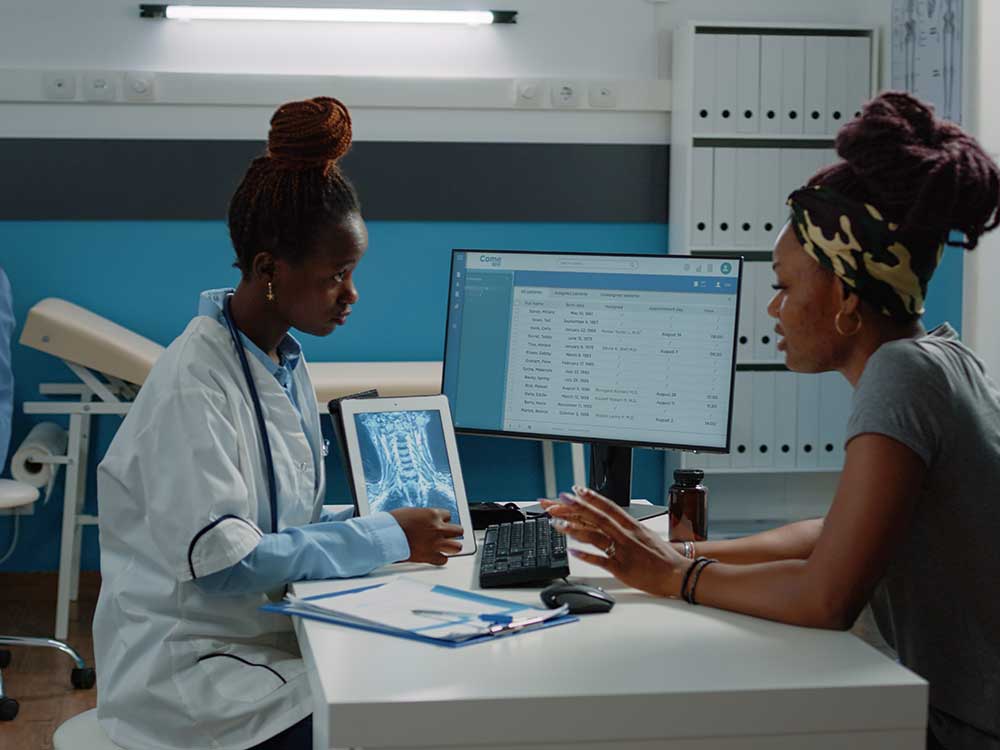The Future of Medical Administration: Trends and Innovations to View
The Future of Medical Administration: Trends and Innovations to View
Blog Article
Finest Practices in Medical Management for Improving Performance and Lowering Prices
In the ever-evolving landscape of healthcare, the pursuit of ideal methods in medical administration is paramount for boosting performance and curbing expenses. By incorporating sophisticated technologies such as electronic health documents and telemedicine, medical care service providers can streamline procedures and improve person care. However, technology alone is not a remedy; maximizing resource appropriation and promoting joint interaction amongst care teams are just as crucial (medical administration). As organizations aim to stabilize high quality and cost, what strategies should be prioritized to accomplish these dual objectives? The solution to these inquiries hold the key to a much more lasting healthcare system.
Leveraging Advanced Modern Technology
The assimilation of electronic remedies right into health care systems has changed the way centers operate, improving processes and boosting person care. By centralizing client information, EHRs remove the requirement for troublesome paperwork and promote seamless communication amongst healthcare providers.
Telemedicine is one more technological innovation that has revolutionized individual interaction. It provides ease for both patients and healthcare specialists by allowing remote consultations, which can minimize the demand for in-person sees and maximize consultation scheduling. In addition, telehealth platforms can expand healthcare accessibility to country or underserved areas, linking gaps in treatment delivery.
Moreover, using Expert system (AI) and machine knowing is ending up being increasingly prevalent in anticipating analytics, permitting for early discovery of potential wellness issues and more enlightened decision-making. These technologies, when integrated properly, can improve diagnostic accuracy and customize client treatment plans, inevitably causing boosted healthcare results and functional efficiency.
Optimizing Resource Allotment
By strategically managing resources such as personnel, tools, and funds, health care facilities can considerably enhance their operational performance, improve patient results, and minimize unnecessary expenses. The initial action in enhancing resource allocation entails carrying out a detailed assessment of current assets and recognizing areas where resources might be underutilized or overextended.
Prioritizing source allowance based upon individual needs and solution demands is important. This entails lining up resources with high-demand locations, such as emergency situation care or specialized therapies, to make sure prompt and efficient client treatment. Executing flexible staffing models can likewise optimize labor sources by adjusting employees allotment in feedback to varying client quantities. Furthermore, welcoming telemedicine and other technical services can relieve physical resource restraints by providing different opportunities for patient-provider communications.
Funds must be diligently kept track of and alloted with strategic foresight to support both short-term functional demands and lasting institutional goals. This includes investing in training programs that boost team competencies and adopting energy-efficient methods that minimize functional costs (medical administration). Eventually, a maximized resource allotment strategy cultivates a lasting medical care environment that is responsive, efficient, and economically prudent
Streamlining Operations Processes
When health care facilities objective to enhance operational efficiency, improving process processes becomes a pivotal focus. Reliable operations reduce redundancy, get rid of unnecessary steps, and boost control amongst health care experts. This method not just speeds up service delivery but additionally boosts the top quality of individual care.

Following, modern technology combination plays a substantial function in improving process. Implementing electronic wellness documents (EHRs) and computerized doctor order access (CPOE) systems decreases documents, decreases human error, and makes sure details comes to all appropriate employees. In addition, leveraging telemedicine platforms can improve client examinations and follow-ups, reducing the strain on physical facilities.

Inevitably, structured process cause set you back reductions and improved patient complete satisfaction, cultivating a more sustainable healthcare environment.
Enhancing Information Monitoring
Structure upon streamlined workflows, maximizing information monitoring ends up being a More hints vital element in advancing health care administration. Efficient information management systems are essential for maintaining exact individual records, improving decision-making, and ensuring conformity with regulative requirements. By applying robust data monitoring options, healthcare centers can improve the quality of person care while at the same time reducing functional expenses.
One trick element of enhancing information management is the assimilation of sophisticated electronic wellness document (EHR) systems. These systems facilitate the smooth exchange of patient details across various departments, reducing replication of examinations and reducing errors. A properly designed EHR system supports data analytics, making it possible for health care carriers to identify trends and make informed decisions regarding person treatment.
Moreover, guarding individual data is paramount. Taking on extensive cybersecurity procedures, consisting of security and Read More Here routine audits, guarantees the stability and privacy of sensitive details. This not only secures clients but additionally preserves the establishment's online reputation.
Purchasing team training is another critical variable. Educating healthcare specialists on information monitoring practices boosts their capacity to successfully use modern technology, causing boosted person outcomes. In verdict, enhancing data management with innovative modern technology and comprehensive training is vital for accomplishing performance and cost decrease in medical management.
Fostering Collaborative Communication
A critical element ahead of time clinical management is promoting joint communication among health care professionals. Effective interaction is paramount for making sure seamless individual care, enhancing therapy results, and minimizing errors. By encouraging open discussion and coordination across multidisciplinary teams, healthcare companies can enhance their functional effectiveness and lower unnecessary prices.
Central to this method is the combination of interaction modern technologies such as digital health and wellness records (EHRs) and secure messaging platforms, which assist in the fast exchange of essential patient details. These tools enable medical care carriers to gain access to and share information in genuine time, guaranteeing that all employee are informed and lined up in their decision-making processes. Normal team conferences and interdisciplinary rounds can further promote a society of partnership and responsibility.
Educating programs concentrated on boosting interaction skills are also important. Eventually, cultivating joint communication leads to improved healthcare shipment and expense savings.

Final Thought
Integrating innovative technology, such as digital wellness records and telemedicine, alongside optimized source allocation and structured operations procedures, is crucial for boosting performance in clinical administration. Effective data monitoring and cultivating joint interaction among healthcare teams are important for reducing redundancies and improving care top quality. By focusing on precautionary care and taking part in top quality enhancement efforts, health care organizations can attain these details considerable expense savings and boosted individual outcomes, therefore making certain lasting health care delivery in a progressively complex setting.
Report this page